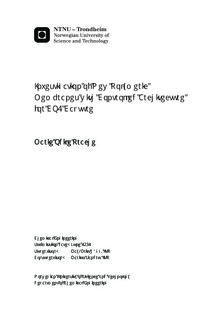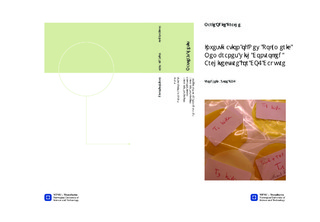| dc.description.abstract | The capture of CO2 is of high interest in a society concerned by climate change and consequently by greenhouse gas emissions. If the amine absorption or hot potassium scrubbing are widely used, several membrane processes are also employed. Many studies are realized to develop new polymers in order to increase the selectivity and permeability of membranes. Polyether based copolymers are particularly studied because of the high flexibility of the polyether chain which enables good gas diffusion properties and favorable polar interactions between the oxygen atoms of ether and the carbon dioxide. Moreover, the mechanical and thermal properties can be tailored using different hard segments, different chain lengths or compositions for the soft segment which affect the crystallinity of both phases. Fixed sites carrier membranes are also studied because facilitated transport enables to get membranes with both high selectivity and permeability. In this study, polyether based copolymers containing poly(ethylene oxide) or poly(propylene oxide) soft segments are considered. The hard segments are aldehyde groups for one series and aldehyde and histamine groups for a second series, based on the same soft segments. The permeation properties for pure N2, CH4 and CO2 have been tested using a time lag permeation rig at 5 bars. Mixed gases experiments have also been performed using a gas mixture of 10% CO2 – 90% N2 at 1.2 and 5 bars feed pressure, in dry and humidified conditions, in order to identify the presence of a possible facilitated transport. The sorption of carbon dioxide has been studied by gravimetric method using a Rubotherm magnetic suspension balance. The membranes materials have been characterized by Differential Scanning Calorimetry and by Fourier Transformed Infrared spectroscopy and some of them with Atomic Force Microscopy. Water vapors swelling experiment has been performed in order to characterize the amount of water sorbed in each membrane and its influence on membrane properties. The gas permeability and gas sorption results were correlated with the chemical polymers structure. Twelve membranes have been studied, half of them containing histamine groups. Infrared Spectroscopy showed that all the membranes have the same functional groups but in different relative proportions which is consistent with the structures of the membranes. Differential Scanning Calorimetry gave the characteristic temperatures of the polymers, the most interesting one being the glass transition temperature. All the soft membranes had a negative Tg whereas the glassy ones had a Tg greater than 35°C. The membranes from the series “without histamine” were softer than the other membranes. Histamine membranes, due to their additional amine groups which can react with water, were able to uptake a bigger amount of water per volume of polymer. CO2 sorption in polymers followed different mechanisms depending on the membranes: Henry’s law for rubbery membranes – all “without histamine” series and T3 and T6; dual sorption model for the other membranes. The membranes without histamine showed higher CO2 permeability for both pure and mixed gases experiments. This is expected and correlated with their rubbery structure which enables bigger free volume. The CO2/N2 selectivity was generally higher for the membranes without histamine. For all the membranes, CO2/N2 selectivity was higher in wet conditions than in dry conditions, proving that facilitated transport was occurring in a certain degree for all membranes. However, it is not possible to conclude that histamine groups enhance this facilitated transport. T3 without histamine and T6 without histamine present the best tradeoff between selectivity and permeability and T2 without histamine and T5 show also good separation properties. Therefore, they are the membranes which could be further developed in order to be used in industry. | nb_NO |

